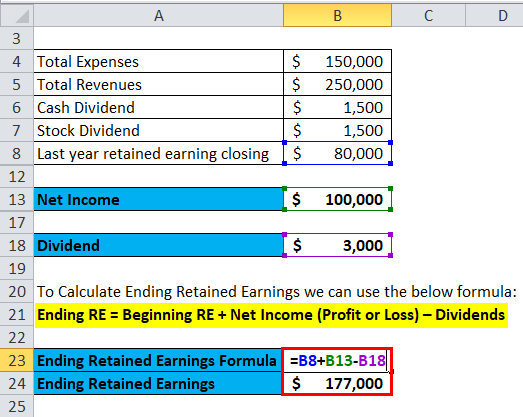Content

If you use trees in Budgetary Control setups, you need tree labels. When you set up a tree for use in a control budget, assign a common label to the parent segment values at which the control budget records and controls budget. And when you set up the related segment in that control budget, specify the tree and label to indirectly indicate the parent segment values at which budget is recorded and controlled. However, you need not define budgetary control options for your detail or summary accounts nor must you define budgetary control groups.
A) PR/PO created with shop floor destination cannot be reserved. If either ‘Reserve at Completion’ is No, then the RESERVE checkbox in document approval form will be disabled. There should not be any PR left for doing the Autocreate action while switching the encumbrance for Requisitions.
Performing Year-End Encumbrance Processing
Select the Account Combination at the header level, as in the Assignments window in the Budget Organization. If budgetary control group is used, create a budgetary control group with the source Payables and Category as Manual.
What is the purpose of encumbrance certificate?
An Encumbrance Certificate (EC) is a crucial document used as evidence of free title/possession of a property. The document is needed while purchasing or selling a property or when applying for a home loan or loan against property to confirm that the particular property is free of any economic or legal liabilities.
Hence we need to know the basic setup required in each modules. For more details, see Budget Balance Sources in the Load Budget topic. You can find the link to the Load Budget topic in the Related https://online-accounting.net/ Topics section. The information contained herein is subject to change without notice and is not warranted to be error-free. Review these decision points to determine which features to enable.
Select another clipboard
By tracking this information, financial analysis is easier to perform and a more accurate predictor. When your analysis is more precise, your estimated cash outflow will reflect your company’s position more truly.
- An encumbrance entry of the type commitment is created by a requisition in PO module.
- The important point over here is that if a user creates the PO manually, it can lead to the duplication of reservation of funds for the same transaction.
- General Ledger immediately updates your funds available when you reserve funds for your transactions in Purchasing and Payables.
- With Encumbrances, no payments leave the University and no actual expense would be generated on a ledger, since it is an expectation of a future actual transaction.
- Once a purchase order goes through the approval process, the encumbrance transaction then shows the money appropriations for that purchase.
- You can also use trees in General Ledger for reporting, allocations, and other processing setups.
When you make the PO, you then will generate an entry indicating the encumbrance or the money you will pay in the future for that order. Once you pay that supplier’s invoice, you will remove that money from within the encumbrance balance. Encumbrance accounting helps your company with budget visibility and analysis by recording planned future payments. Rather than just looking at current transactions, this type of accounting encourages tracking upcoming expenses to help show a more detailed view of your cash flow. Encumbrance accounting primarily allows nonprofits and government organizations to record and monitor all future and planned expenses. As a result, they’re able to predict cash outflows more accurately. Encumbrance accounting acts as a budgeting tool, resulting in more effective planning, allocating, and controlling their budgets.
What is an example of an encumbrance?
Oracle Corporation and its affiliates disclaim any liability for any damages caused by use of this software or hardware in dangerous applications. Request the Encumbrance Trial Balance Report in General Ledger to review the year-end carry forward balances. Define the MassCancel criteria in Oracle Purchasing to select the encumbrances you want to cancel. General Ledger defaults to the first period for the current budget. General Ledger uses the period name along with the amount type to determine funds available. Obligation – When a requisition is converted to a purchase order and the order is approved then commitment is replaced by an obligation.
President Bill Lincoln Could Fix What’s Wrong With America – Bloomberg
President Bill Lincoln Could Fix What’s Wrong With America.
Posted: Fri, 28 Aug 2020 07:00:00 GMT [source]
In Balance Reports, encumbrances can be toggled on or off to reflect available balances. Report users can use this encumbrance indicator to evaluate their available balances and solvency concerns, at budget or fiscal year end. If you want to implement Encumbrance Accounting, you will need to allow Encumbrance Accounting and Budgetary Control for your ledger and business units. However, this does not require you to establish the control budgets. On the other hand, you would select to use Encumbrance Accounting, rather than Budgetary Control, if you wanted to report balances that account for the General Ledger’s requisition and purchase order responsibilities. If you enter transactions, such as requisitions, purchase orders, or invoices, without Budgetary Control or Encumbrance Accounting, you will not be able to apply it retroactively.
If control level is none for budget entry business function, budget balances aren’t updated. When you do not enable the budgetary control flag, you can still enter manual encumbrances via Control Your Budgets Using Encumbrance Accounting In Oracle journal entry, but you cannot generate encumbrances from requisitions and purchase orders. Budget managers can decide whether to enable budgetary control for this transaction type.
- As a result, they’re able to avoid exceeding the allocated budgets and minimize overspending.
- Similarly the encumbrance is relieved at the subsequent stage.
- Encumbrance accounting primarily allows nonprofits and government organizations to record and monitor all future and planned expenses.
- Insufficient funds override rules and approvers can be configured as part of budgetary control setup.
- Define financial encumbrance options in Purchasing and Payables in the Financials Options window.
- And you can also share trees between General Ledger and Budgetary Control.
The complete use of capabilities of encumbrance accounting, users must enable the budgetary control flag for a set of books. When users enable the budgetary control flag, the system automatically creates encumbrances from requisitions, purchase orders and other transactions originating in feeder systems such as Purchasing and Payables. When users do not enable the budgetary control flag, they can still enter manual encumbrances via journal entry, but Users cannot generate encumbrances from requisitions and purchase orders. Users have two options for using encumbrance data to monitor over–expenditure of a budget. After actual and encumbrances have been posted, users can generate reports to show over–expenditures.
Sreekanth Reddy Pothula’s Oracle ERP Blog
Check box which enables the Override region to be displayed on the Create Control Budget page. Specify a maximum override amount allowed for the control budget. Enable notifications to notify the budget manager when no overrides are available or when overrides are taken. General Ledger carries forward balances for only those accounts that are included in the ranges you enter and that are assigned to the budget organization you specify. If you do not carry forward encumbrances, you might want to cancel existing requisitions and purchase orders behind the encumbrances. You can easily identify purchase orders and requisitions behind encumbrances.
What is the use of encumbrance as a budgetary control account?
The purpose and main benefit of encumbrance accounting is avoiding budget overspending, by showing open commitments as part of projected expenses. Encumbrances are important in determining how much funds are available as a projected expense planning tool.

No responses yet